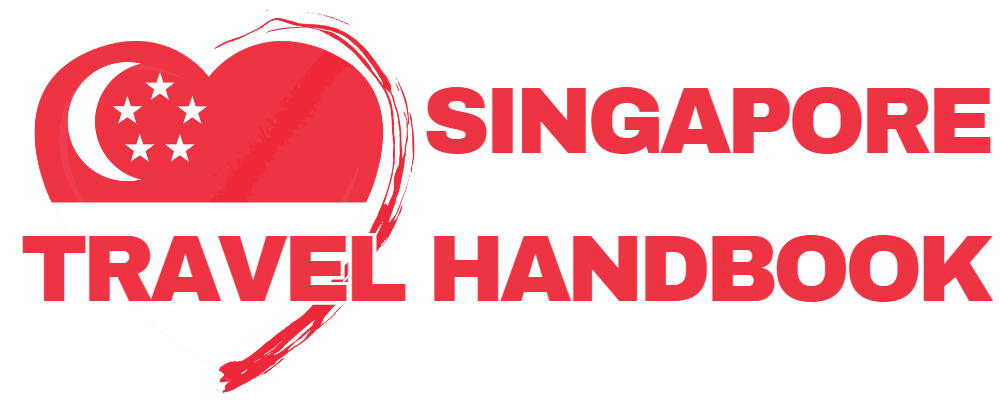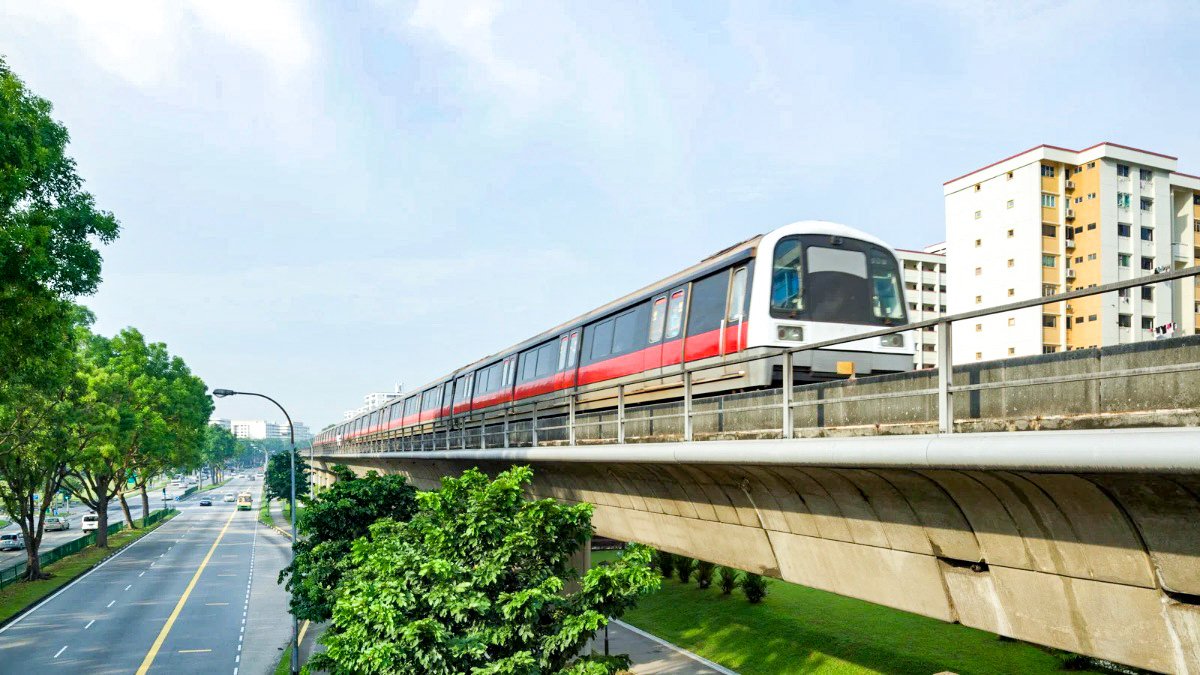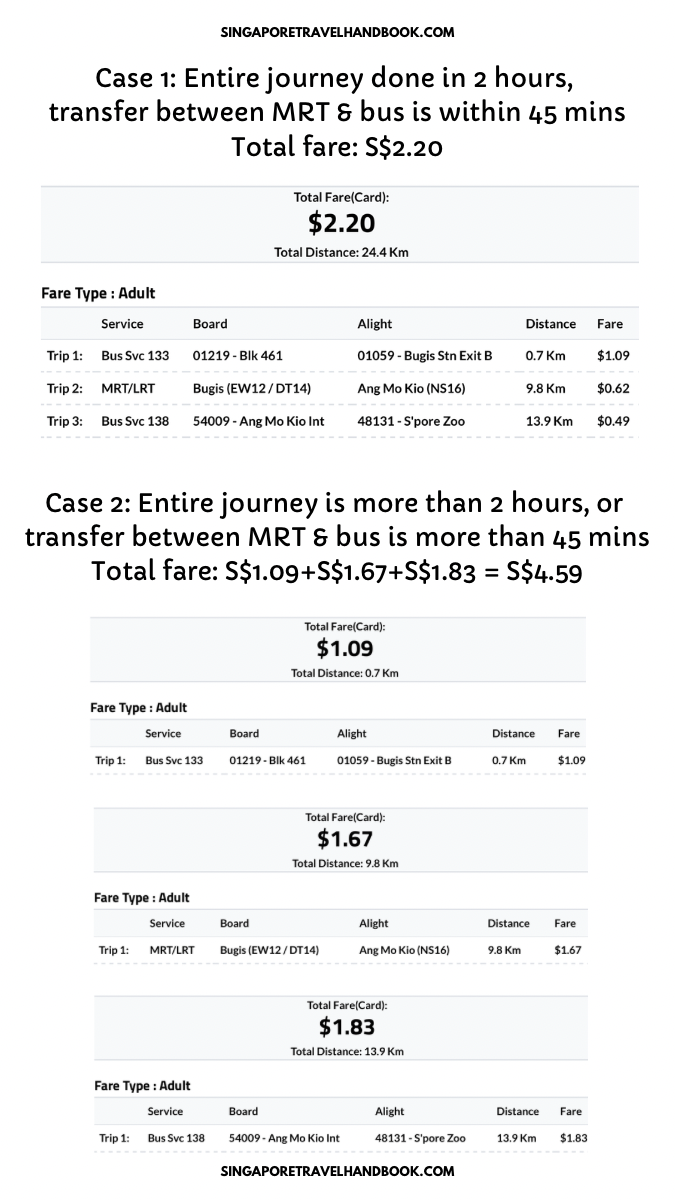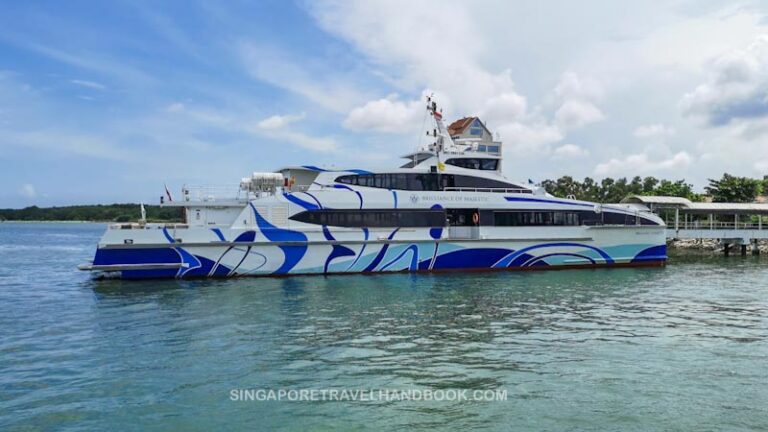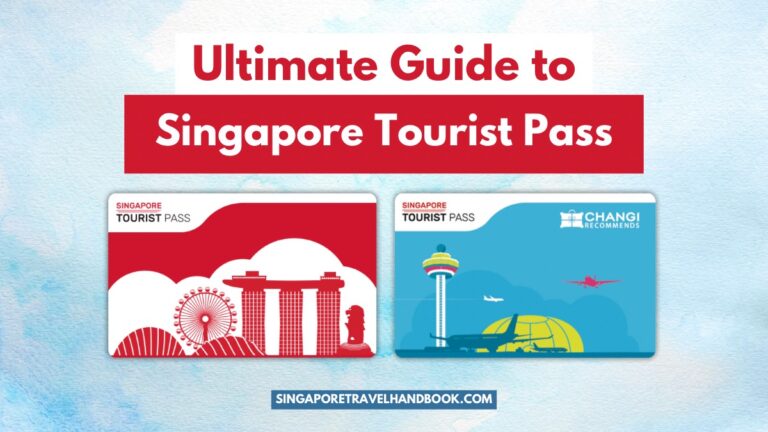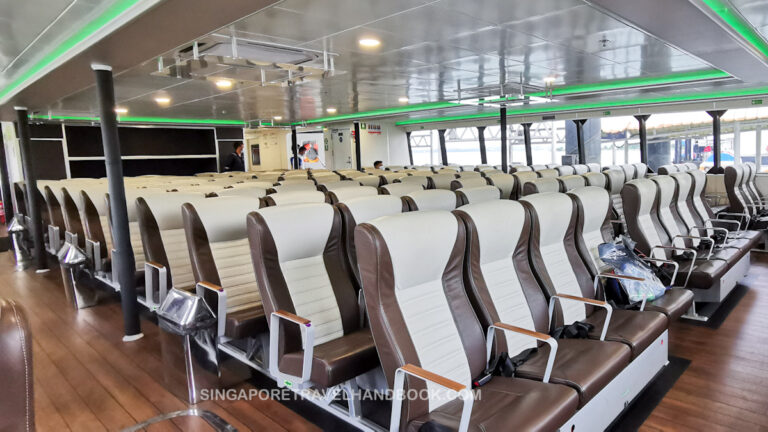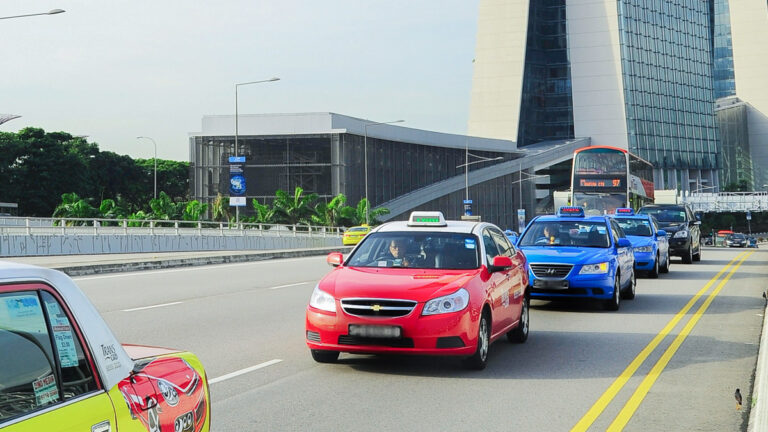How to Take MRT in Singapore
MRT is probably the best way to get around Singapore. It runs on time (2-7 mins interval), it is extremely affordable (S$1 to S$2.50 per trip), it is clean, it is safe, all the stations and platforms are accessible.
MRT stands for Mass Rapid Transit. The MRT network is quite extensive and covers almost the entire Singapore (almost, not all, you’ll still need bus to reach certain places).
There are currently 6 MRT lines, with the 7th and 8th lines under construction. Here are all the MRT Lines in Singapore
- East-West Line
- North-South Line
- North East Line
- Circle Line
- Downtown Line
- Thomson-East Coast Line
- Cross Island Line – Under Construction
- Jurong Region Line – Under Construction
Beside the above MRT Lines, there are also LRT Lines which has smaller carriages and serve localised region. There are currently 3 LRT Lines:
- Sengkang LRT
- Punggol LRT
- Bukit Panjang LRT
MRT & LRT are seamlessly connected, so you can change from MRT to LRT without having to get out of the station. Taking an LRT is not much different from MRT, so even though this article talks about MRT, it essentially covers LRT as well.
Don’t let the complicated-looking map scares you, you don’t need to know every stations and every lines. There are several trip planners you can use to plan your journey, or you can simply ask the station officer for help.
Using the MRT in Singapore is extremely easy and convenient. You can simply use your debit/credit card to pay directly at the gate; if you don’t have one, there are other payment options which I’ll get to later in this article.
This article will covers EVERYTHING you need to know about how to travel with MRT in Singapore, including my personal tips.
Singapore MRT Map
This is the latest Singapore MRT Map as of Q3 of 2024 with the opening of TEL’s 4th stage.
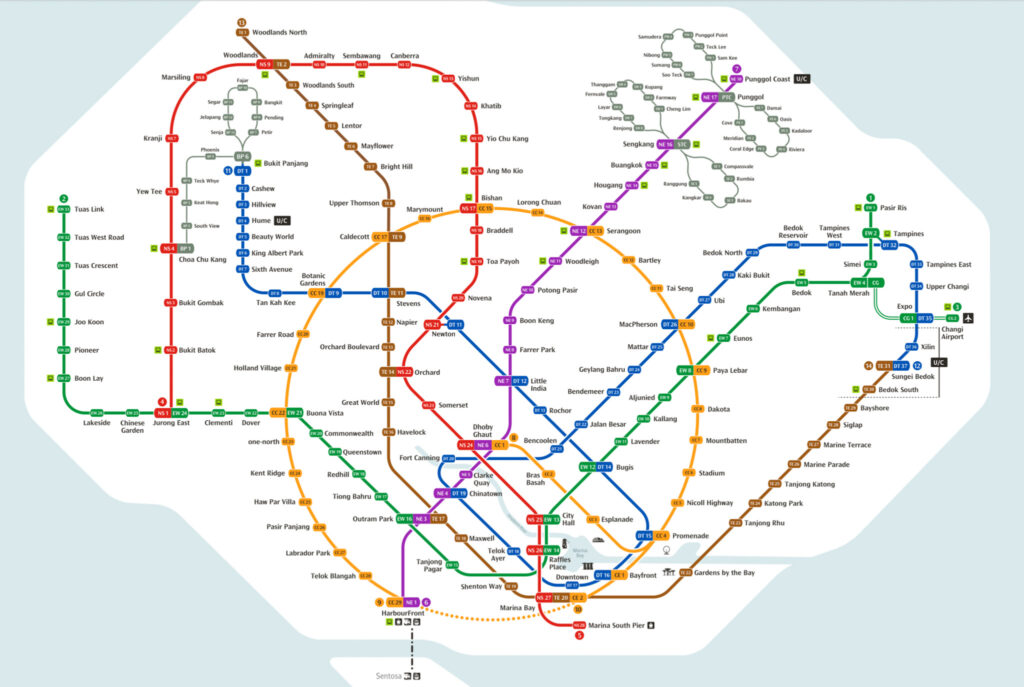
The next minor revision of MRT Map will be in 2026 when TEL’s 5th stage is completed.
Meanwhile, the next major revision is forecasted to be in 2027 when the Jurong Region Line Phase 1 is completed.
Singapore MRT Operating Hours
Singapore MRT operates from about 5.30am to about midnight daily.
Each station has its own starting and ending times, some starts as early as 5.07am (like Ang Mo Kio) and some as late as 6.08am (like Fort Canning). You can check the exact timing of the first & last train for each station on SMRT website or SBS website.
Singapore MRT Rush Hours
MRT rush hours are as follow:
- Morning: 7.30am to 9.30am
- Evening: 6pm to 8pm
During the morning rush hours, the crowded trains will be the ones traveling towards the city (eg: Tanjong Pagar, Raffles Place, City Hall, Dhoby Ghaut). So, the trains traveling towards the suburbs are not too crowded.
Similarly, during the evening rush hours, the crowded trains will be the one traveling towards the suburbs (eg: Punggol, Sengkang, Woodlands, Yishun, Tampines).
From my own experience, the rush hours in Singapore’s MRT is still manageable compared to other countries. Here, there is no need to squeeze inside the train because the train frequency is quite fast during rush hours (1 to 3 mins). If you encounter a crowded train, just wait for the next train.
Singapore MRT Fare
MRT Fare is calculated using the method called Distance Based Fare. Essentially, the fare depends on the distance of the journey. The longer your journey is, the more expensive the fare is.
If you enter a station and immediately exit without traveling, you will still be charged the fare of traveling for 1 stop (unless you are using STP). So before you tap, ensure you have brought all your necessary belongings.
To check the MRT Fare for certain route, you can use this Fare Calculator by LTA.
Pro-tip: When you take MRT before/after a bus, your fare will be calculated as a whole journey instead of MRT fare + bus fare, as long as your transfer duration is within 45 minutes, and the total duration is less than 2 hours.
If the above sounds complicated, here’s an example to simplify it. Let’s say that you stay at Hotel Boss which is in Bugis area (but not near MRT) and you want to go to Singapore Zoo. So, you take a bus from Blk 461 bus stop to Bugis MRT Station, then MRT from Bugis to Ang Mo Kio, followed by a bus ride from Ang Mo Kio bus interchange to the Zoo.
The final fare that’ll be charged on your card is calculated based on the total distance traveled from Blk 461 to Zoo. The fare is NOT calculated based on individual fare on the first bus + fare on the MRT + fare on the second bus.
Distanced-based fare is cheaper than individual-trip-based fare. This way, you don’t have to be afraid of taking too many different buses for fear of spending too much money.
One caveat though: You can only take 1 MRT ride throughout the 2 hour window in order to get the discounted transfer fare, but you can take unlimited number of bus rides within 2 hours.
How to Pay for MRT in Singapore?
1. Contactless Bank Card (Credit Card/Debit Card)
Contactless Bank Card is the easiest payment method, because you can just use the credit card or debit card that you already have! Make sure the cards have contactless logo on them!
For even more convenience, you can add your cards to your mobile wallets (eg: Apple Pay, GPay, Samsung Pay, Fitbit Pay, etc). When you’re about to enter the gate, simply tap on the card reader with your phone or wearables! Just ensure that your devices have NFC function.
Most contactless bank cards can be used for traveling on bus and MRT in Singapore. However, some cards are not accepted (see Introduction tab in this FAQ).
Your card will be charged the next day on the total amount of fare you incur on the previous day. An admin fee of S$0.60 will be charged to your card per day.
Contactless Bank Card is my preferred payment method because it’s so convenient (I can just tap with my card), and I can earn points when I use my credit card!
2. EZ-Link
EZ-Link is a prepaid travel card which you can use to pay for bus, MRT and even at retail stores.
You can buy EZ-Link from SimplyGo Ticket Offices, SimplyGo Ticketing Service Centres, Concession Card Replacement Offices, Passenger Service Centres located at all MRT stations, and 7-Eleven. It costs S$10 which consists of S$5 value + S$5 non-refundable deposit.
You need to maintain a minimum $3 balance in your EZ-Link in order to be able to board MRT and buses. When your balance falls below $3, you need to top up to continue using it. You can check the remaining balance in your EZ-Link by downloading the SimplyGo app and adding your EZ-Link card details into the app.
You can top up EZ-Link card through SimplyGo app or at the Ticketing Machines located at MRT stations.
You can get a refund on the remaining value of your EZ-Link card at any SimplyGo Ticket Offices or Ticketing Service Centre. The $5 card cost is non-refundable.
3. NETS FlashPay
NETS FlashPay works exactly the same way as EZ-Link card. It can be used to pay for transport as well as for food or goods at retail stores.
The differences are the issuer and the places where it’s accepted. EZ-Link was started by Authority while NETS was started by a group of banks in Singapore.
From my personal observation, NETS seems to be more widely accepted in retail stores than EZ-Link.
You can buy NETS FlashPay from SimplyGo Ticket Offices, convenience stores (7-Eleven, Cheers, Buzz), NETS Customer Service Centre, as well as Lazada and Shopee.
As a resident in Singapore, I don’t carry NETS FlashPay because my ATM card has built-in NETS function. But I do think NETS FlashPay is useful for tourists who don’t have credit / debit card, or don’t want to use their credit / debit card for overseas payments.
4. Singapore Tourist Pass
Singapore Tourist Pass (STP) is a pass that allows you to take unlimited number of bus and MRT rides.
Here are the prices and validity duration:
- S$17 for 1 day
- S$24 for 2 days
- S$29 for 3 days
You can buy it at the places listed here.
When your pass expires, it reverts to a normal EZ-link card. You may top up the card and continue using the card for transport or retail purchases; or you can keep the card as a souvenir and use it as a normal EZ-Link card the next time you return to Singapore.
When should you use STP instead of EZ-Link or Contactless Bank Card? Here are the scenarios:
- You want to visit A LOT of places.
- You don’t need the cab, you’re comfortable with using public transport.
- You don’t know when you will visit Singapore again.
- Based on average trip fare of S$2:
- For 1-day STP, it is worth it if you use public transport at least 9 times a day.
- For 2-day STP, it is worth it if you use public transport at least 6 times a day (or 12 times over 2 days)
- For 3-day STP, it is worth it if you use public transport at least 5 times a day (or 15 times over 3 days)
Step by Step on How to Take MRT Train in Singapore
Step 1: Get your card ready
Decide whether you want to use contactless bank card, EZ-Link card, NETS or STP. If the latter three, purchase the card before taking public transport.
Step 2: Plan your route
Use Google Maps to plan your route. Other journey planner tool are: MyTransport app (iOS | Android) and SMRT Journey Planner.
Step 3: At the entrance, tap your card
At the entrance, tap your card at the gate. One card can only be used for one person, so make sure everyone in your group has his/her own card.
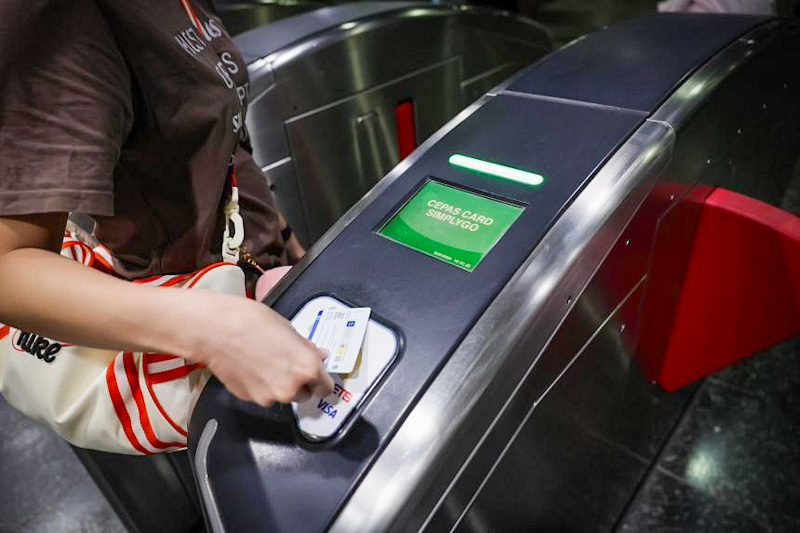
Step 4: Head to the platform
Make your way to the correct platform. Take note of the train direction.
Step 5: Queue properly in front of train door
Once at the platform, queue at the side of the train door, according to the arrow marking on the floor.
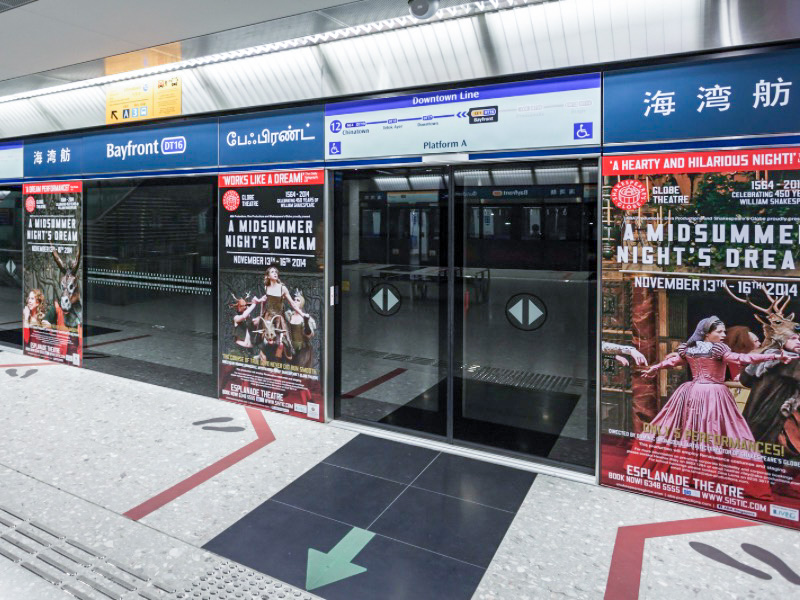
Step 6: Let passengers come out
When the train arrives, let the alighting passengers come out first before you enter the train.
Step 7: Enter the train and enjoy your ride
Enter the train and try to go further into the middle of the train. Avoid standing near the door area unless there’s no more space at the middle of the train. Avoid sitting at priority seats unless you’re pregnant, carrying a child, old or disabled.
Step 8: Alight at your destination
Pay attention to where the train is stopping. When the train is approaching your destination station, you may get ready and stand near the door.
Step 9: Figure out the exit to your destination
If you’re unsure about which exit to, check out the map at the station or ask the staffs.
Step 10: Tap out from gate
Lastly, tap out from the gate using the same card that you used to enter. If you use a different card, your journey is incomplete and you will be charged with maximum fare on both cards.
MRT Etiquette
At the gate: Prepare your travel card before you arrive at the ticket gate. Don’t stand at the “tap card” gate while digging through your bag looking for your travel card. If you are not ready to tap yet, move away and don’t block the gate until you find your travel card.
At the gate: The gates are one-directional. Tap your card at the gates that have green arrow, do not tap at the gates with red cross. If unsure, observe how others are doing it first.
At the gate: If possible, avoid using the wide gate. The wide gate is meant for people with wheelchairs, strollers or bulky items.
In the station: If you’re carrying bulky items, like a stroller, take the lift instead of escalator, for everyone’s safety.
In the station: When taking the escalator, if you’re not rushing, stand on the left side. The right side is for people who are rushing.
At the platform: Queue at the side of the train door. Don’t cut the queue. Don’t stand at the center of train door in order not to block people coming out from the train.
At the platform: When the train doors open, allow people to alight first. Then, enter the train in an orderly manner. Avoid pushing and avoid any physical contact with other people.
Inside the train & station: Do not eat or drink. It’s against the law and you will get fined.
Inside the train & station: Do not smoke. It’s against the law and you will get fined.
Inside the train: Avoid sitting at priority seats unless you’re pregnant, carrying a child, old or disabled.
Inside the train: If you’re standing, do hold the poles during the journey for your own and other people’s safety.
Inside the train: If you’re standing, try to stand at the center of the train. Do not crowd the door areas.
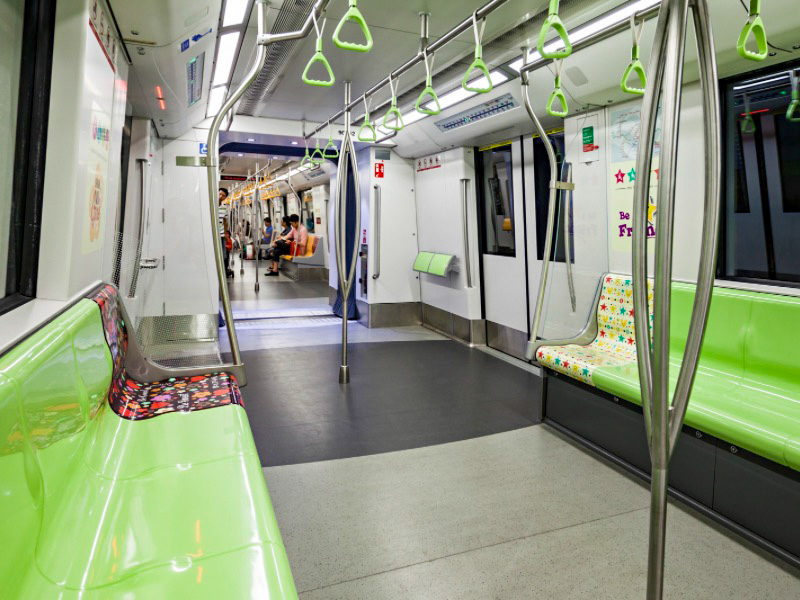
Inside the train: If you’re wearing a bulky backpack, put it down on the floor so that it won’t hit other people accidentally.
Inside the train: Do not talk loudly or play loud music.
FAQ
What is the MRT train frequency?
Train frequency varies depending on the time of the day and the day of the week. Typically, weekday trains are more frequent than weekend trains.
The train frequency during peak hours is about 2 to 3 minutes and 5 to 7 minutes during off-peak hours. The trains almost never have frequency more than 6 mins, except early in the morning, near midnight, or during train fault.
Yes, train faults do happen from time to time; when such fault happens, the free shuttle bus will be activated, so you can go to your destination by taking these express buses. These express shuttle buses only stop at MRT stations (not at every stations).
Is it more expensive to use credit card to pay for MRT in Singapore?
No, the fare is the same. But, you’ll be charged admin fee of 60 cents per day, which is totally worth the convenience it brings. By using credit card or debit card, you don’t have to purchase another travel card.
What to do if I can’t tap in or tap out at MRT gate?
It a common thing that happens to everyone all the time, really. Don’t panic. Don’t keep trying to tap for 10 or 20 times, it’s annoying.
What you should do is just walk to the Passenger Service Counter, tell the staff that you can’t tap, and they’ll fix the card for you. The whole thing takes less than 1 minute. Don’t be afraid, they won’t interrogate you.
Sometimes, they do ask where was the last time you took MRT or bus, etc. Most of the time, they don’t even speak a single word to you. That’s efficiency!
How to change train from one line to another line?
To change train from one line to another line, follow the direction and DO NOT tap out (except at 3 stations).
If you’re changing train at Newton MRT, Tampines MRT and Bukit Panjang, you have to tap out and tap in again within 15 minutes in order not to incur extra charge.
Chinatown MRT is really tricky because there are so many exits so you might accidentally tap out when you want to change train; please note that you SHOULD NOT tap out at Chinatown if you’re only changing train. Just ask the staff if you’re unsure about which way to go.
Have any questions about traveling in Singapore? Join All About Singapore Travel FB group, I’ll be there to answer your questions!
